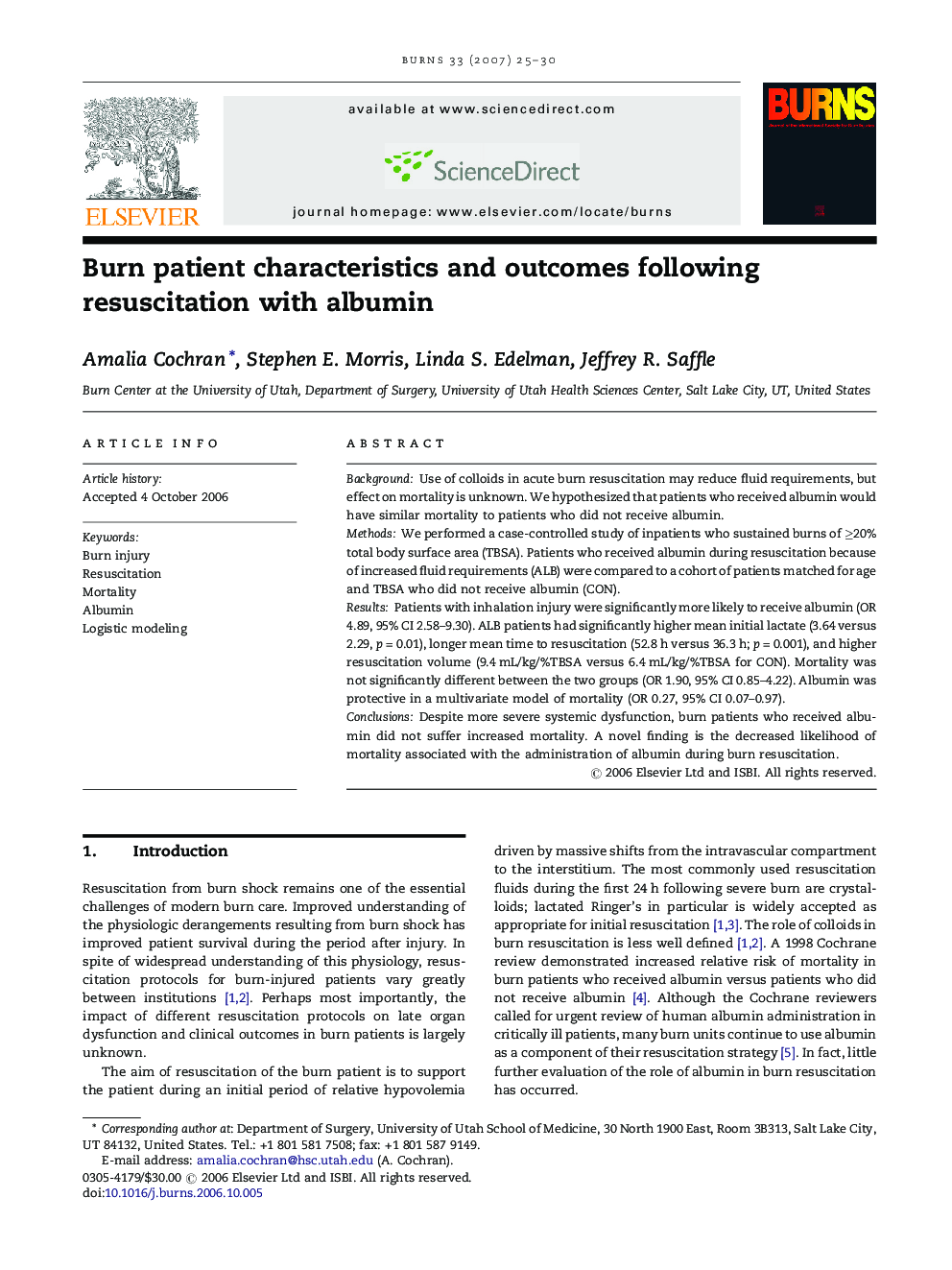| Article ID | Journal | Published Year | Pages | File Type |
|---|---|---|---|---|
| 3106330 | Burns | 2007 | 6 Pages |
BackgroundUse of colloids in acute burn resuscitation may reduce fluid requirements, but effect on mortality is unknown. We hypothesized that patients who received albumin would have similar mortality to patients who did not receive albumin.MethodsWe performed a case-controlled study of inpatients who sustained burns of ≥20% total body surface area (TBSA). Patients who received albumin during resuscitation because of increased fluid requirements (ALB) were compared to a cohort of patients matched for age and TBSA who did not receive albumin (CON).ResultsPatients with inhalation injury were significantly more likely to receive albumin (OR 4.89, 95% CI 2.58–9.30). ALB patients had significantly higher mean initial lactate (3.64 versus 2.29, p = 0.01), longer mean time to resuscitation (52.8 h versus 36.3 h; p = 0.001), and higher resuscitation volume (9.4 mL/kg/%TBSA versus 6.4 mL/kg/%TBSA for CON). Mortality was not significantly different between the two groups (OR 1.90, 95% CI 0.85–4.22). Albumin was protective in a multivariate model of mortality (OR 0.27, 95% CI 0.07–0.97).ConclusionsDespite more severe systemic dysfunction, burn patients who received albumin did not suffer increased mortality. A novel finding is the decreased likelihood of mortality associated with the administration of albumin during burn resuscitation.
